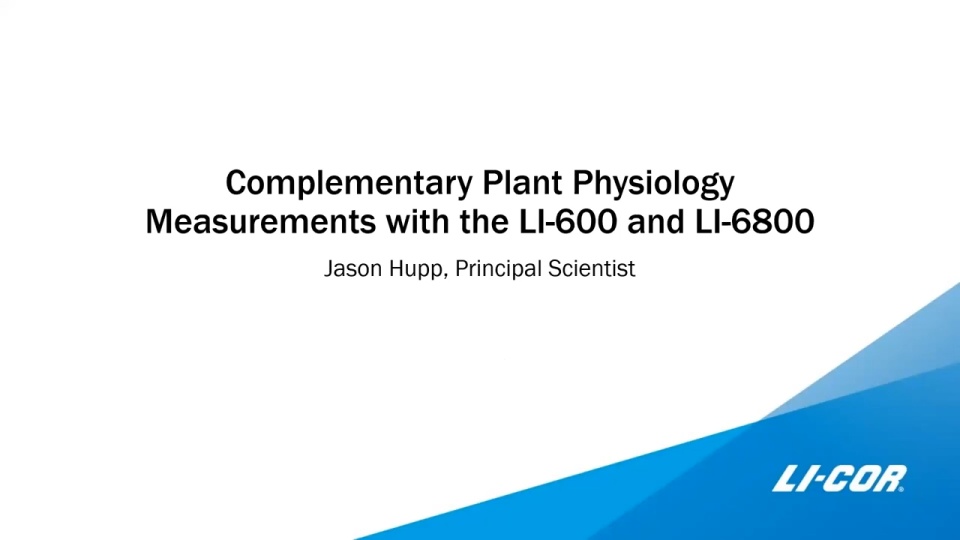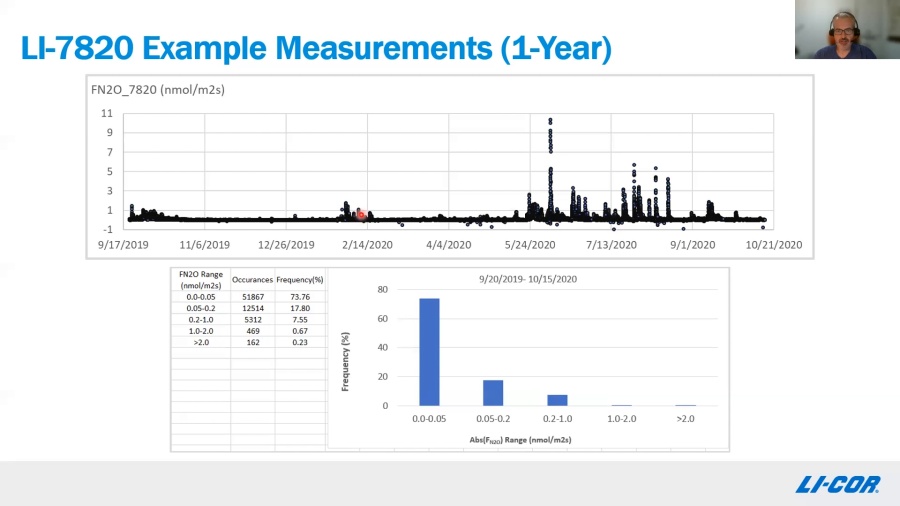When you complete this form your information is received by LI-COR Inc (United States) and shared with its subsidiaries, LI-COR GmbH (Germany) and LI-COR Ltd (United Kingdom). LI-COR and its subsidiaries work closely together to provide scientific expertise and prompt responses to customers globally. Depending on your location, your information may also be shared with a distribution partner. For more details, view our Privacy Policy (www.licor.com/privacy) or contact privacy@licor.com.
A Timeline of Photosynthetic Regulation during Phosphate-Limited Photosynthesis Created Using Dynamic Assimilation Techniques
Description:
Plants have a maximum photosynthetic rate set by the ability to produce end products from phosphorylated Calvin-Benson cycle intermediates. When the plant is fixing carbon at this maximum rate, called triose phosphate utilization (TPU) limitation, the concentration of inorganic phosphate drops, limiting ATP production and capping the rate of photosynthesis. This paradigm of photosynthesis is characterized by several regulatory features, especially the reduction of rubisco activation state and the buildup of proton motive force-based quenching of electron transport. This level of regulation takes a few minutes to establish. Consequently, when plants are suddenly introduced to TPU-limiting conditions, regulation briefly cannot control photosynthesis and oscillations in photosynthetic rate can be found. We used dynamic measurements of gas exchange in combination with chlorophyll fluorescence and leaf spectroscopy to study the control of photosynthesis at three timescales: instantaneously, before slower regulation can begin; over a few minutes, allowing time for rubisco deactivation and pmf-based control; and up to 30 hours later, long enough that protein-level regulation has been seen in response to TPU limitation.
We found that initially there is a buildup of electrons on the PS2 electron transport chain that diverts energy into extant non-photochemical quenching. Over the first 5 minutes, energy-dependent quenching builds up and rubisco deactivates by 40%, relieving the pressure on the electron transport chain. After hours of adaptation, accumulation of photoinhibition reduces the importance of energy-dependent quenching. At the end of a day of adaptation, the plants no longer exhibit symptoms of phosphate-limited photosynthesis. We believe this shows that plants will regulate their photosynthesis to never be phosphate-limited for a long period of time. This would explain the common observance that photosynthesis is never phosphate limited in the wild, and it would complicate the role of phosphate limitation in environmental models of photosynthesis.
Speaker(s):
Alan McClain
MSU-DOE Plant Research Laboratory
Michigan State University


